The jungle has a way of reclaiming what humans build—slowly wrapping ancient stones in green embrace until temples disappear beneath centuries of tropical growth. Cambodia’s rainforests hide hundreds of Khmer temples that once served thriving communities, yet now exist as archaeological puzzles where massive trees grow through doorways and vines drape carved deities like living curtains. These forgotten sanctuaries offer something Angkor Wat can’t: the thrill of discovery and the humbling reminder that even great civilizations eventually return to the earth.
Finding these hidden gems requires dedication, local guides, and respect for sacred spaces still revered by rural communities. Here’s a list of 17 ancient temples where Cambodia’s jungles have created natural museums of extraordinary beauty and historical significance.
Beng Mealea – Siem Reap Province
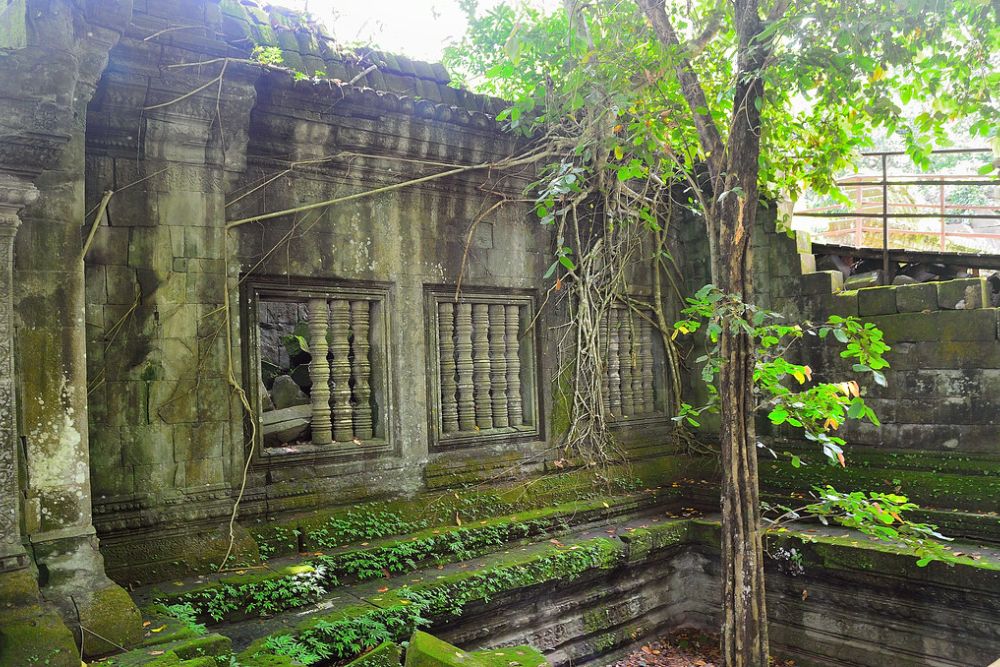
This massive 12th-century temple complex lies in complete ruin roughly 40 miles east of Angkor Wat, where the jungle has transformed once-grand galleries into mysterious tunnel systems navigated by flashlight. Enormous trees grow through collapsed roofs while their roots slowly dismantle stone blocks that master craftsmen fitted together without mortar more than nine centuries ago.
The temple’s layout mirrors Angkor Wat’s basic design, though nature has redesigned it into something resembling an ancient adventure movie set where visitors climb over fallen lintels and duck under precariously balanced stones.
Koh Ker – Preah Vihear Province
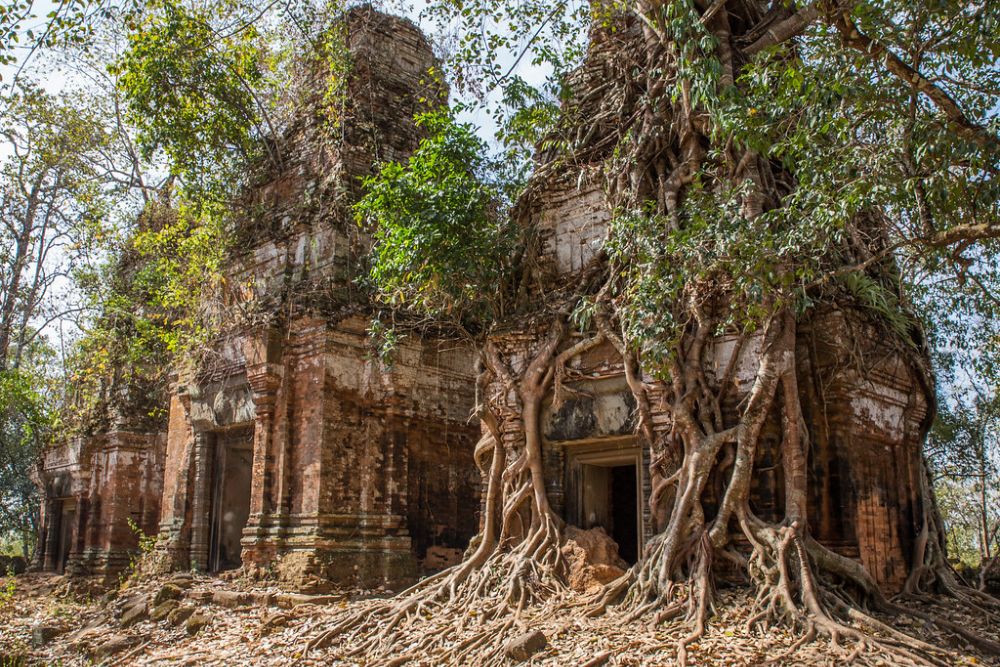
This remote 10th-century capital sits deep in the northern jungle where Khmer King Jayavarman IV briefly moved his entire court away from Angkor, creating a short-lived rival city that the jungle swallowed when political power returned south. The site’s 30-meter pyramid temple towers above the forest canopy like a Cambodian ziggurat, though most visitors come for smaller temples where intricate carvings emerge from beneath decades of vine growth.
Recent demining efforts have opened previously inaccessible areas, revealing sculptures and architectural details that demonstrate why this forgotten capital deserved its brief moment as the Khmer Empire’s center.
Like Travel Pug’s content? Follow us on MSN.
Banteay Chhmar – Banteay Meanchey Province
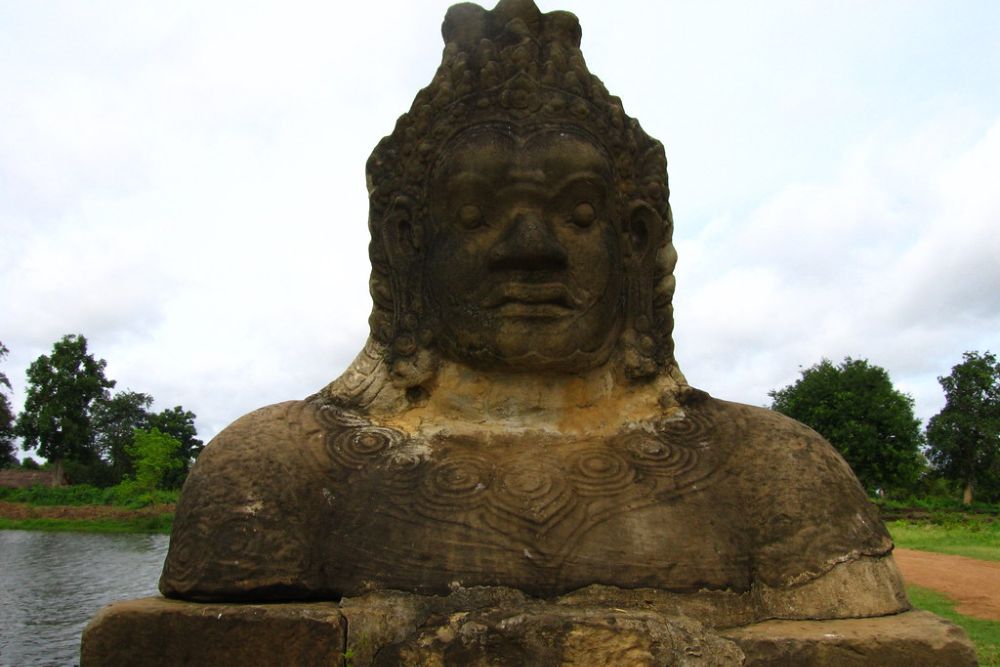
This sprawling 12th-century complex in Cambodia’s far northwest showcases some of the finest Bayon-style carvings ever created, though few tourists make the challenging journey to appreciate artistry that rivals that of Angkor. Massive face towers emerge from jungle growth, while bas-reliefs depicting naval battles and royal processions remain remarkably intact despite centuries of abandonment.
Local communities have protected the site through traditional spiritual practices that consider these ruins sacred, creating partnerships with archaeologists working to preserve Cambodia’s second-largest temple complex.
Sambor Prei Kuk – Kampong Thom Province
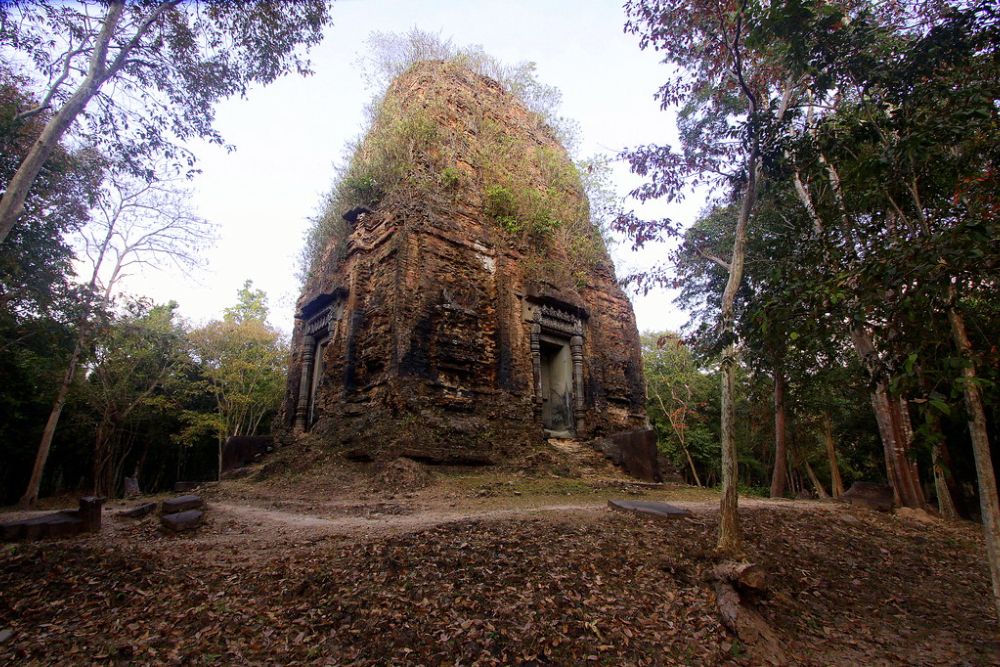
These 7th-century brick temples predate Angkor by several centuries, representing some of Southeast Asia’s earliest examples of classic Khmer architecture, where octagonal towers demonstrate design principles that influenced later masterpieces. Dense forest has protected delicate stucco carvings that would have eroded if exposed to direct weather, though finding specific temples requires navigating unmarked trails through dense jungle.
UNESCO recognition has brought increased attention to this archaeological treasure, though visits still feel like genuine exploration rather than tourism.
Preah Khan (Kompong Svay) – Preah Vihear Province
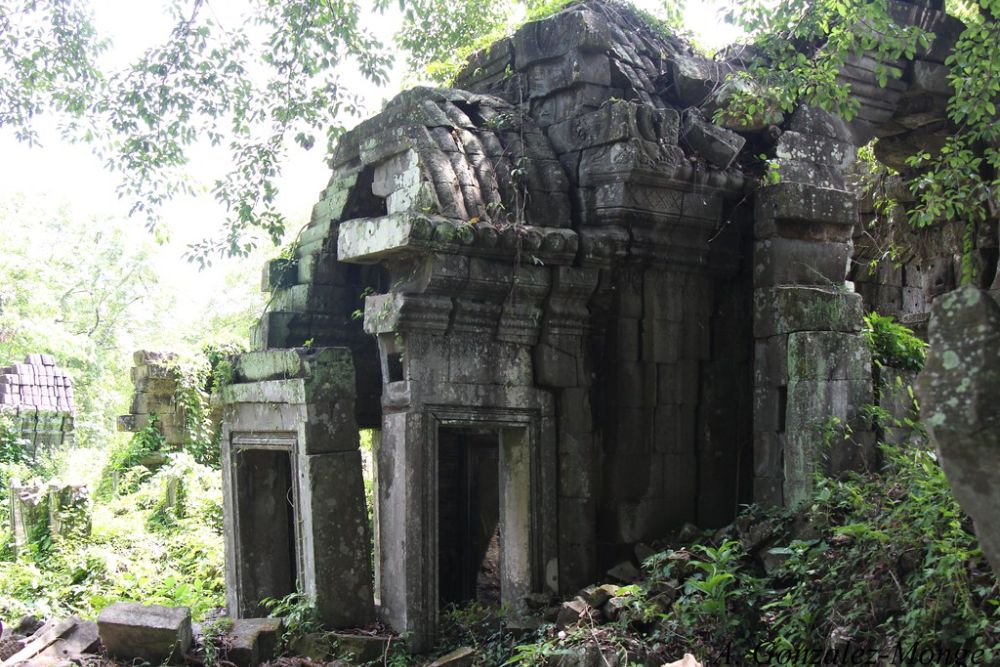
Not to be confused with Angkor’s Preah Khan, this massive complex covers more ground than Angkor Wat itself, yet remains virtually unknown outside academic circles due to its remote location in the northern jungle. The site includes a medieval Khmer city with temples, palaces, and infrastructure that supported thousands of residents during the 12th century—though the jungle has transformed streets into animal paths and courtyards into tree groves.
Recent archaeological surveys using LIDAR technology have revealed the complex’s true scale, showing urban planning that was centuries ahead of its time.
Like Travel Pug’s content? Follow us on MSN.
Banteay Ampil – Banteay Meanchey Province

This border temple sits in disputed territory that remained dangerous until recent years, preserving architectural details and sculptural programs that looters damaged at more accessible sites. Dense mine fields surrounded the complex for decades, creating unintentional conservation that allowed the jungle to protect carvings without human interference—though demining efforts now permit careful archaeological investigation.
The temple’s remote location means visitors often encounter wildlife that has made homes in ancient galleries, creating encounters between human history and natural habitat that feel almost mystical.
Wat Banan – Battambang Province
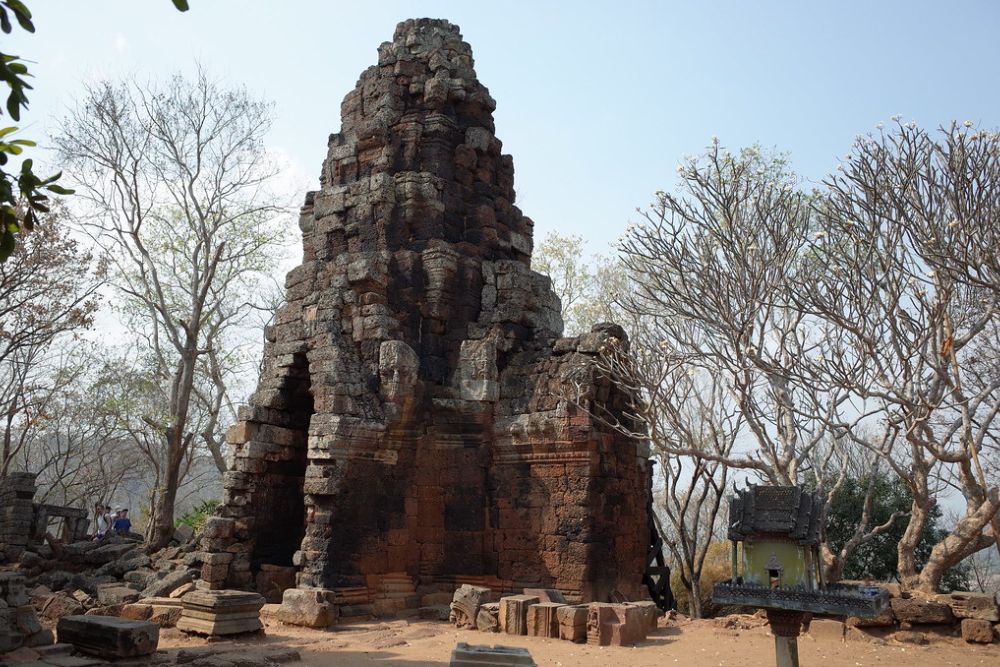
Five sandstone towers crown a hilltop temple that requires climbing 350 steps through tropical forest where butterflies and exotic birds create a natural accompaniment to the archaeological experience. Built in the 11th century, the temple provides panoramic views across rice paddies and distant mountains while showcasing classic Angkor-period architecture in pristine condition—though few visitors make the effort to reach this hilltop sanctuary.
Local legend claims the temple inspired Angkor Wat’s design, though historians debate whether architectural similarities reflect shared builders or common aesthetic traditions
Phnom Chisor – Takeo Province
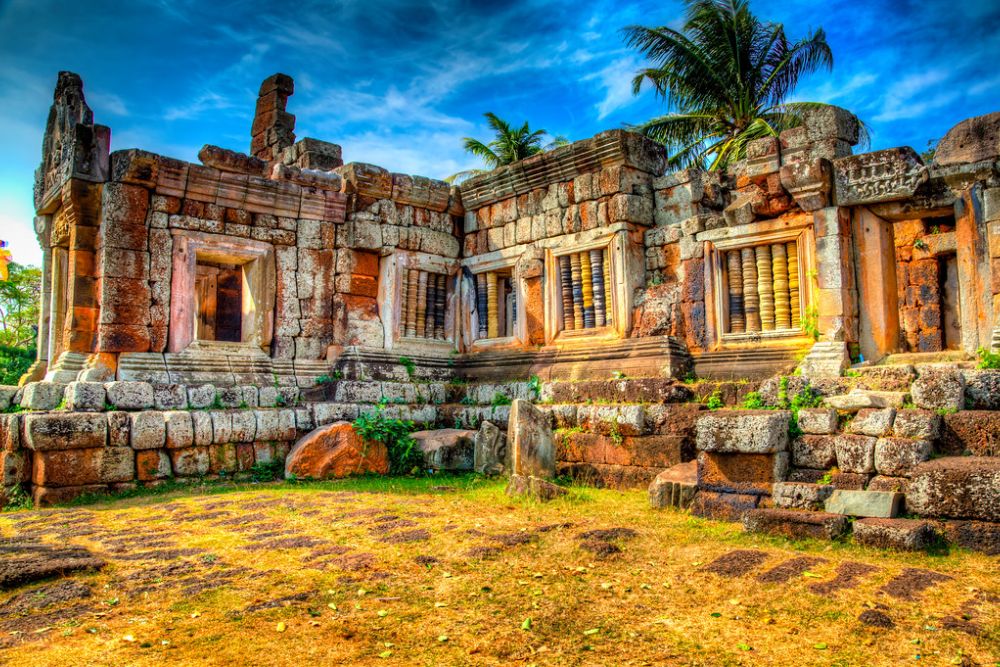
This mountaintop temple complex overlooks the Mekong Delta from a 400-foot peak where ancient Khmer architects created a spiritual center that served pilgrims for centuries before jungle reclaimed access roads. Stone staircases wind through forest growth toward summit temples where carved doorways frame views across the countryside that haven’t changed much since the 11th century.
The site demonstrates how Khmer builders integrated architecture with natural landscape, creating religious experiences that combined human artistry with divine mountain settings.
Like Travel Pug’s content? Follow us on MSN.
Prasat Preah Vihear – Preah Vihear Province
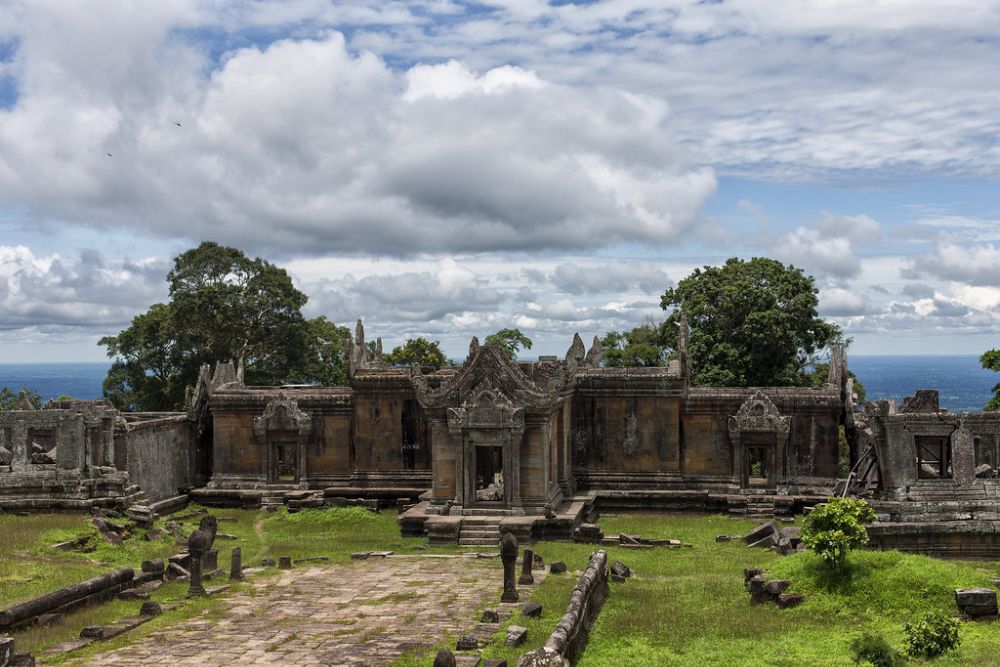
This clifftop temple complex stretches along a ridge in the Dangrek Mountains, where the border between Cambodia and Thailand has been disputed for decades—though the temple’s magnificent architecture transcends political boundaries. Ancient builders carved chambers directly into cliff faces while creating courtyards that seem to float above jungle canopy hundreds of feet below.
UNESCO World Heritage designation has brought international attention to conservation needs, though accessing the site still requires navigating both physical challenges and complex border politics.
Prasat Bakan – Siem Reap Province

This pyramid temple sits on an artificial hill within Angkor Archaeological Park, yet thick jungle growth has kept it largely hidden from tourists who stick to the main temple circuit less than 2 miles away. The structure demonstrates early experiments with temple-mountain architecture that would later culminate in Angkor Wat’s magnificent central tower—though vegetation has transformed this prototype into something resembling a natural hill with stone surprises.
Recent clearing efforts have revealed intricate carvings and architectural details that illuminate the evolution of Khmer religious architecture.
Banteay Samre – Siem Reap Province
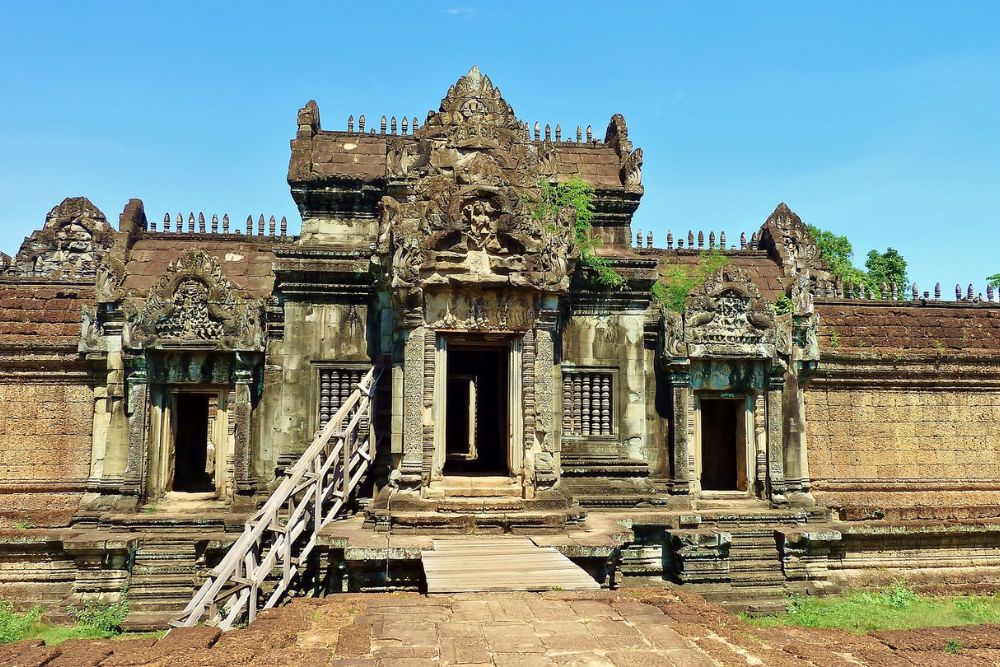
Despite its location within the greater Angkor complex, this beautifully preserved 12th-century temple receives few visitors due to jungle roads that discourage casual tourism. The temple showcases classic Angkor Wat-style architecture in remarkably intact condition, with libraries, galleries, and towers that demonstrate the height of Khmer architectural achievement.
Restoration work has revealed original design elements while preserving the sense of discovery that makes jungle temples so compelling for visitors seeking authentic archaeological experiences.
Like Travel Pug’s content? Follow us on MSN.
Prasat Kravan – Siem Reap Province
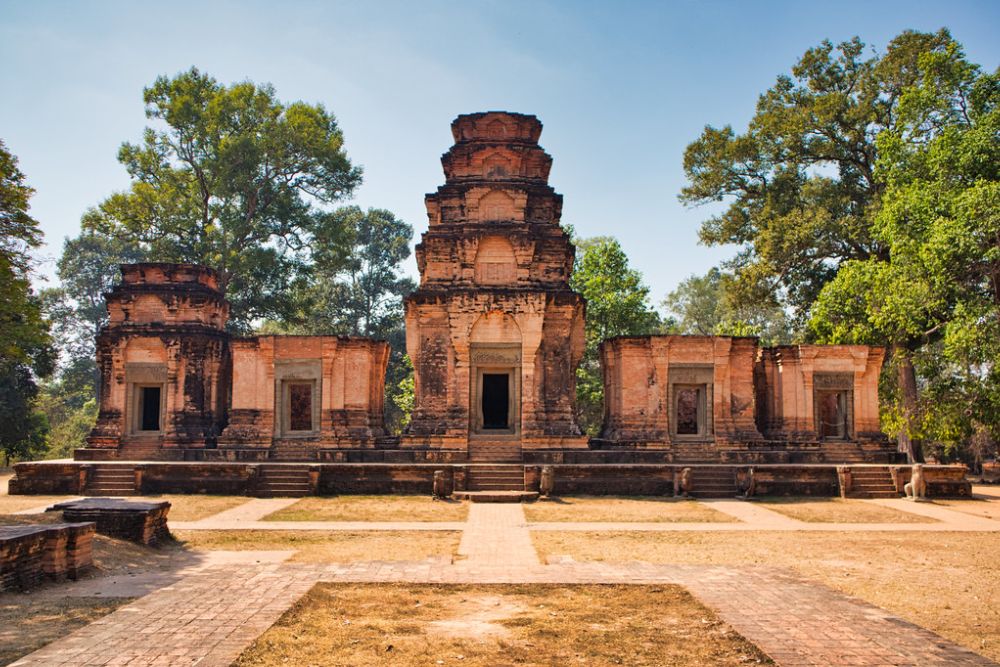
Five brick towers dedicated to Vishnu contain some of Angkor’s finest interior bas-reliefs, carved directly into fired brick walls using techniques that remain mysterious to modern conservation specialists. Jungle surrounds this intimate 10th-century temple, where morning light illuminates carvings that few tourists see due to the site’s location off main visitor circuits.
The temple’s modest size belies its artistic significance—interior sculptures demonstrate sophistication that influenced centuries of Southeast Asian religious art.
Ta Som – Siem Reap Province
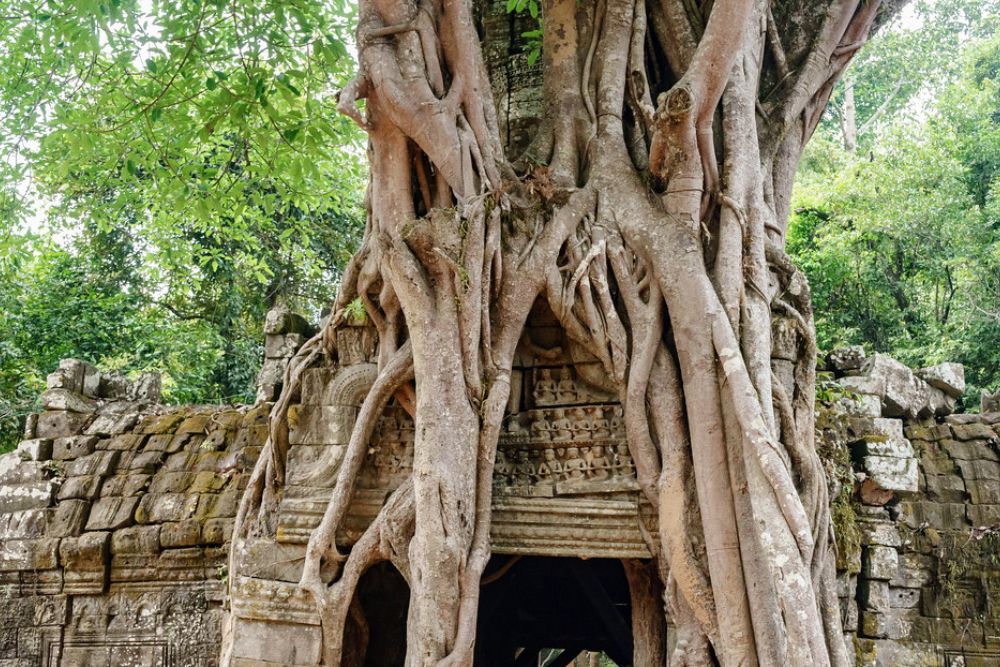
This small Bayon-style temple demonstrates how jungle can enhance rather than destroy ancient architecture, where a massive kapok tree has grown through the eastern gopura creating one of Cambodia’s most photographed archaeological scenes. Built in the late 12th century by King Jayavarman VII, the temple features face towers and intricate carvings that remain remarkably preserved despite centuries of forest growth.
The integration of trees and temples has become so complete that removing the vegetation would likely collapse the structure, creating a permanent marriage between nature and human artistry.
Preah Pithu – Siem Reap Province
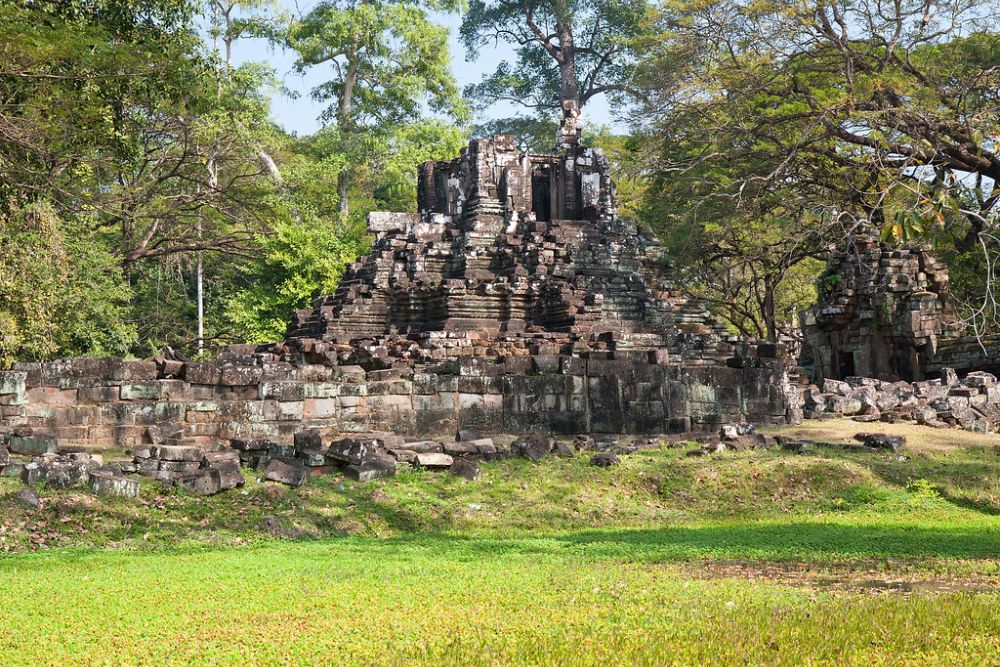
This group of five temples within Angkor Thom receives minimal tourist attention despite featuring some of the complex’s finest architectural details and sculptural programs. Dense vegetation has protected delicate carvings from weather damage while creating an atmosphere of discovery that the main temples have lost to mass tourism.
Each temple represents different architectural periods and religious traditions, creating a condensed survey of Khmer religious development that scholars consider invaluable for understanding the evolution of Angkorian art.
Like Travel Pug’s content? Follow us on MSN.
Chau Say Tevoda – Siem Reap Province
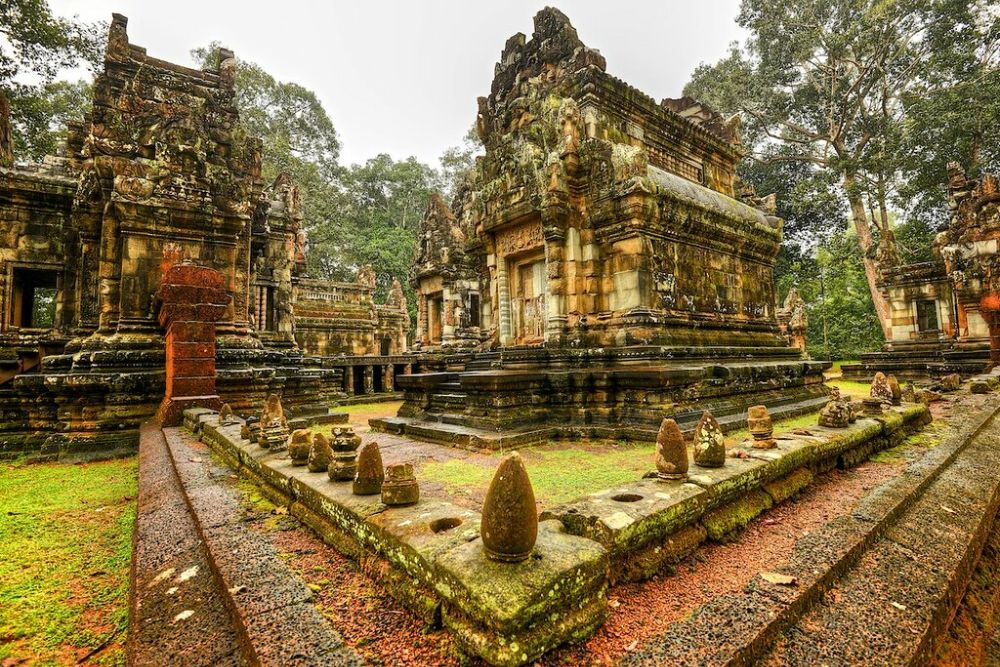
This mid-12th-century temple sits across from Thommanon temple near Angkor Thom, yet jungle growth has created significantly different preservation conditions that demonstrate how vegetation can both protect and threaten ancient structures. Recent conservation efforts have stabilized the structure while maintaining a forest setting that enhances rather than detracts from the architectural experience.
The temple’s compact size and exquisite proportions make it a masterpiece of classical Khmer design, though few visitors appreciate its artistic significance due to its location away from major tourist circuits.
Baksei Chamkrong – Siem Reap Province
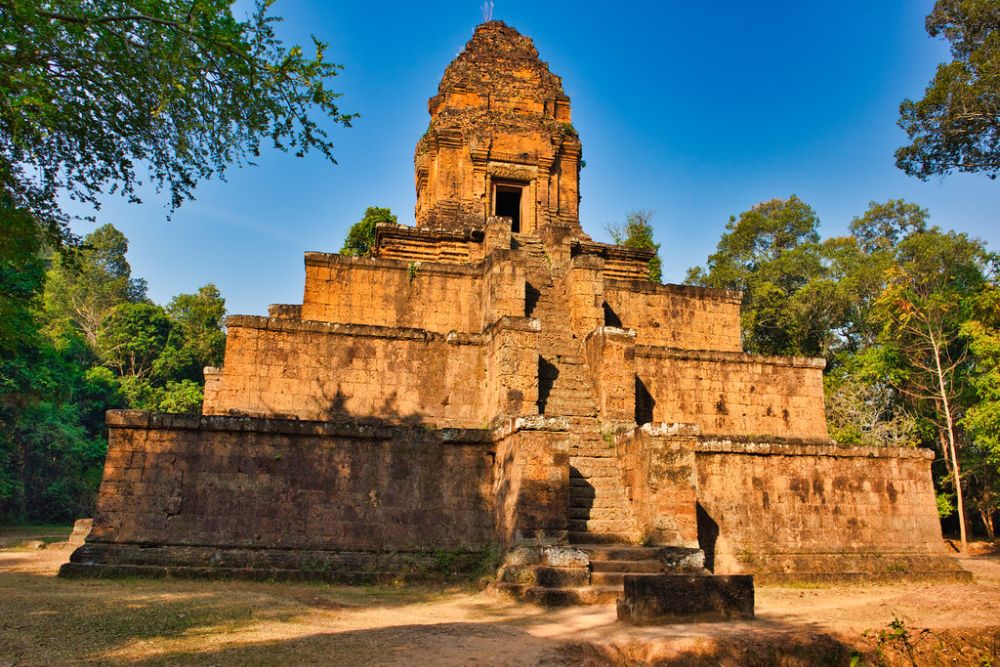
This pyramid temple near Angkor Thom represents early experiments with temple-mountain concepts that would later achieve full expression in Angkor Wat’s magnificent central tower. Jungle has partially reclaimed the structure’s lower levels while revealing architectural details that illuminate the development of Khmer religious architecture over several centuries.
The temple’s modest size makes it easy to overlook, though its historical significance for understanding Angkorian development patterns makes it essential viewing for visitors interested in archaeological rather than purely touristic experiences.
Spean Thma – Siem Reap Province
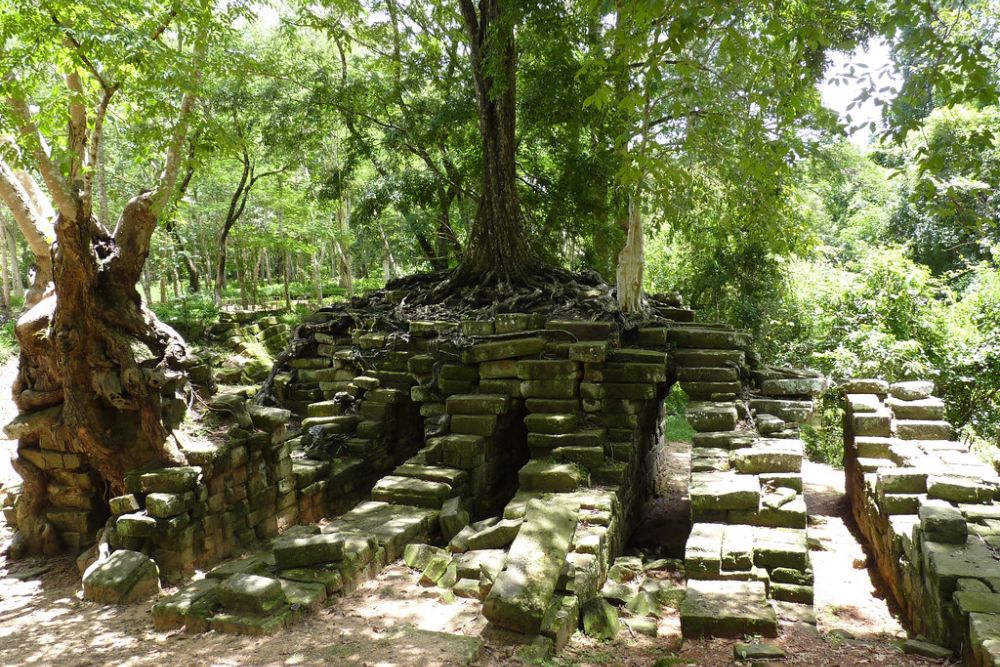
This ancient stone bridge demonstrates how Khmer engineers created an infrastructure that has survived centuries of jungle growth and seasonal flooding while continuing to serve local communities. Massive stone blocks fitted without mortar support bridge arches that span water channels still used for irrigation by nearby villages.
The structure’s survival illustrates how thoughtful engineering can create monuments that serve both practical and aesthetic purposes while integrating harmoniously with natural environments that change dramatically over time.
Like Travel Pug’s content? Follow us on MSN.
Where History Sleeps Beneath Green Canopies
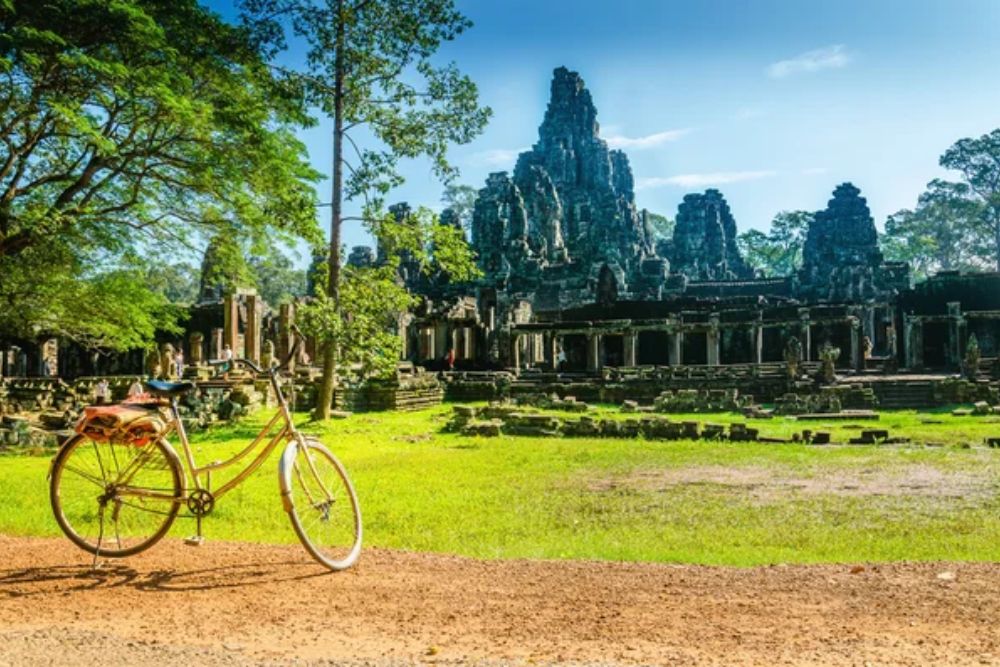
These hidden temples prove that Cambodia’s archaeological treasures extend far beyond the famous monuments that attract millions of tourists to Siem Reap each year, representing a vast cultural landscape where human creativity and natural forces have collaborated to create unique preservation conditions. Each site tells different stories about Khmer civilization while demonstrating how jungle environments can both threaten and protect ancient architecture in ways that modern conservation science is still learning to understand.
In our age of overtourism and digital documentation, these forgotten sanctuaries remind us that some historical experiences still require physical effort, local knowledge, and respect for sacred spaces that rural communities continue to honor through traditional spiritual practices. The marriage between ancient stone and living forest creates archaeological experiences that connect visitors directly to both human creativity and natural processes that operate on timescales far beyond individual lifetimes.
More from Travel Pug

- 20 Best Beach Towns in the Carolinas
- 13 Destinations Where Tourists Regularly Regret Their Trip
- 20 Things You Actually Get in First Class
- 20 Small Airports With Aviation Museums
- 20 Places in the U.S. That Are Perfect for a Reset Trip
Like Travel Pug’s content? Follow us on MSN.
